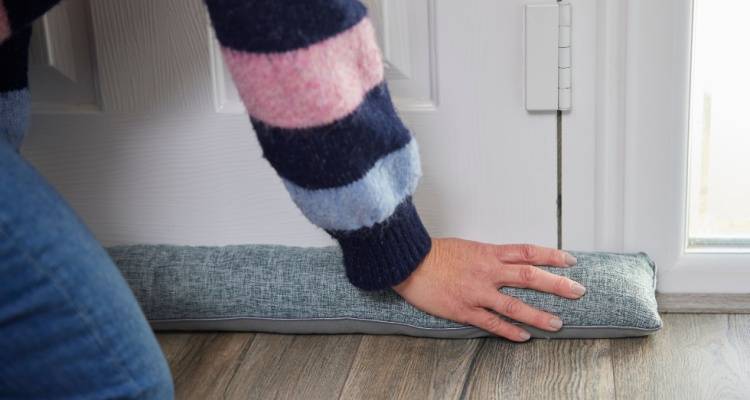10 Tips on Preparing Your Home for Autumn
As we approach the autumn time, many households will be considering how to prepare their home for a change in season. In this blog, we’ll discuss ten top tips to prepare your home for the months ahead as the weather changes as do indoor decor tastes.

1. Warm Lighting Options
Note: If new lighting fixtures need to be installed, ensure you hire a qualified electrician. This is not only a legal requirement but important for safety purposes as attempting to install a new lighting fixture DIY can result in lethal electrocution.
As we enter the autumn time, you may want to consider opting for warm lighting. To introduce warmth and be autumn-friendly, you could consider adding ‘warm’ light bulbs.

By this, we mean light bulbs that glow at 2,000 to 3,000 kelvin (colour temperature as opposed to heat temperature), offering a ‘warm white’ glow. Of course, you’ll want to ensure that suitable light bulbs are added to the right fixtures by a qualified electrician.
Along with having warm LED light bulbs installed, it’s a good idea to consider including layered lighting. Table lamps and suitable wall lights placed in the right locations can also help.
Layered or/and warm lighting can create a cosier environment more suitable for an autumn environment.
2. Draught Proofing Your Home
With the days set to gradually cool (even if there surely will be some warm weeks along the way), early autumn is a good chance to draught-proof your home.
More thorough, although costlier options include new wall insulation, loft insulation or/and double- or triple-glazed windows.

However, simpler, cheaper and often DIY-friendly solutions include:
- Draught excluders for interior doors
- Correctly-sized letterbox brush or flap
- Draught-proofing window strips to limit the cold seeping in through windows
Other options which can be costly, though generally not to the same extent as double-glazing or wall insulation, is to opt for draught-proofing measures for a floorboard or/and skirtboard.
While floorboard or/and skirt board draught-proofing may be done DIY, you should only do so if you’re sure of what’s involved. If not 100% certain, hire a professional to err on the side of caution, ensuring safe and effective draught-proofing measures.
3. Test Your Carbon Monoxide and Smoke Alarms
Whether or not you have recently, it’s a good idea to test your carbon monoxide and smoke alarms when entering autumn as you are likely to start using your boiler again more and more as the months progress.

Moreover, you should test your carbon monoxide and smoke alarms once every week or two moving forward and at all times of the year. This is important to keep you and everyone else in your home safe.
Carbon monoxide and smoke alarms with replaceable batteries should have their batteries replaced once every 6 to 12 months or sooner if needed. The actual carbon monoxide/smoke alarm units themselves will need replacing about once every 5 to 10 years or sooner if required.
4. Make Your Home Cosier for the Autumn Time
With the autumn months nearing, there are many ways you can make your home cosier. For one, cushions and throws including those with autumn-oriented colour hues can go a long way to making your interior design cosier and more inviting. Suitable soft furnishings can also work wonders for making an autumn-friendly home.

A stylish and comforting decor approach that is trending in general lately is that of comfortcore. This trend involves producing a calming and cosy aesthetic such as with soft textures, soothing colour tones and more.
5. Decluttering and Cleaning All Over
Along with changing up the look and feel of your home’s decor this autumn, you should consider decluttering or/and cleaning your home throughout.
Depending on how much free time you have, you may want to dedicate a weekend or/and a few separate days to decluttering and cleaning your home.

It is best to ensure you have clearly labelled/distinguished bags for items that you want to put away or get rid of.
As an example, you might opt for use binliners with different labels or/and even different colour binliners entirely in order to place in items and categorise them based on items you want to place elsewhere, items to keep in storage at home, items you wish to recycle or/and items you want to give to charity.
6. Autumnal Scents and Decor
In order to provide your home’s interior with autumnal scents, consider purchasing some autumn-themed candles, reeds or/and diffusers.

Some notable autumnal candle scents include spiced pumpkin, pumpkin pecan pie and cinnamon stick. There also exists a range of reed and diffuser autumn-themed fragrances to choose from.
Be sure to place them in suitable locations (particularly candles since safety is key to minimise the risk of a fire) and avoid having too many in a given location as you don’t want the smells to be overpowering that can then lead to an uncomfortable environment or/and headaches.
7. Freshen Up Your Garden Space
Along with revitalising your home’s interior, this autumn can act as the ideal chance to tidy and enhance your back garden.

Some ways of freshening up your back garden when entering the autumn include:
- Clear leaves and care for your lawn
- Performing weeding in your garden
- Cutting back perennials where suitable*
- Plant autumnal-themed flowers in a well-suited spot**
- Have outdoor lighting installed (e.g. solar lights)
- Look at one or more water features to add to your garden
- Consider adding raised beds or/and refurbishing existing ones in an appropriate location within your garden
* Certain perennials will need to be cut back around this time as they die down. If in doubt, verify with a professional gardener.
** You’ll need to ensure that the flowers you wish to plant are suited to planting at this time of year.
8. Guttering Inspection and Cleaning
With autumn nearing, it’s also important to inspect your guttering and clear it of any debris that may have gathered in recent weeks or months. In general, gutters should be cleaned once or twice a year.
Cleaning before autumn can help, though you should also consider cleaning them in early winter or early Spring in addition.
Either way, in order to inspect and then (if needed) clean your gutters DIY, you’ll need to utilise a ladder, place it in a safe and suitable location and at the correct angle and have someone hold it from the bottom.
Next, ascend the ladder carefully while wearing gloves and taking up a plastic bag with you. You may or may not also prefer to take a gutter scoop up with you.

You’ll then need to remove gutter debris by hand using the gloves or the gutter scoop (though you’ll still want to wear suitable gloves even if only using the scoop) and place it into the plastic bag.
Once the bag is getting full, descend the ladder carefully with the person below still holding it at all times and throw out the bag after reaching the ground. Go up with another bag and repeat until your gutter is clear.
You may want to use a garden hose (on a suitable power level such that it doesn’t damage the guttering to wash out any remaining bits of debris. It’s also worth considering whether or not a safety harness may be required too to err on the side of caution.
All that said, if in doubt regarding any aspect of this task, safety-related or otherwise, hire a suitable professional to clean out your guttering.
9. Professional Boiler Checks or/and Servicing
Another important consideration to prepare your home for the autumn time is to hire a qualified, professional heating engineer to check your boiler. You may even opt to have it serviced if it is the correct time of year.
Either way, a boiler inspection in early autumn can verify that it is safe and working well, increasing the odds that all will work as intended throughout the autumn. This can not only help keep you and everyone at home safe but limit the chances of your heating system malfunctioning as the days and nights get cooler through the autumn months and into the winter.

You could also have a heating engineer take a look at your radiators or/and pipework. Moreover, if deemed suitable or otherwise the correct time of year, you may want to hire them to bleed your radiators (which should be done once every several months).
Further, you should have your heating system powerflushed about once every five years or sooner if deemed appropriate. Powerflushing must be done by a professional whereas you can bleed radiators DIY if you know exactly what is involved, though if unsure, hire a professional all the same.
Notably, if bleeding radiators DIY, a key safety note is to make extra sure your heating is off and that it is not scheduled to turn on (such as with the boiler’s timer or a smart thermostat) during the bleeding process or else you risk coming into contact with scalding water.
10. Take a Look at Doors and Windows
Last but not least, it’s a good idea to verify your doors or/and windows are secure and functional with some of the cooler months pending. While arguably more important for the winter time (at least when it comes to keeping your warm), it’s a good idea to do so ahead of the autumn too.

Earlier we discussed the value of draught-proofing your doors and windows, however, if they are partly broken, not fully secure or otherwise not functioning as intended, such measures may not prove effective. Either way, looking for issues with your doors and windows can prevent problems from worsening and provide a chance to address security concerns.
If your doors or/and windows are partly malfunctioning or unsecure, check whether the fixes are DIY friendly with a reliable manufacturer. If unsure as to whether or not the fix is okay DIY or uncertain about how to pull it off, hire a professional to fix your door(s) or/and window(s) thus keeping you and everyone in your home safe and warm through the autumn and into the winter as the weather gets cooler still.
|
Find Tradespeople & Save Money
MyJobQuote connects you with up to 3 available local tradespeople, so you can compare quotes & save money with ease.
|

|








